When a severe thunderstorm rolls through your neighborhood in the Denver, CO metro area, accompanied by pounding hailstones, you may find yourself wondering, “How much hail does it take to damage a roof?” It’s a common question for homeowners who want to protect their properties from the destructive forces of nature. Does a small hailstone have the potential to cause significant damage? Or does it require larger hailstones to create a dent or compromise the integrity of the roof?
The answer lies in understanding the relationship between hail size and roof damage. In this article, we will delve into the fascinating world of hail and its impact on different roofing materials. We will explore the threshold sizes for hail damage, the factors that influence hailstone size, and the visible signs of hail damage that you should look out for. You will also discover preventative measures and hail-resistant roof options that can help protect your roof from hail damage.
Whether you live in a hail-prone area or have recently experienced a severe storm, this article will provide valuable insights into hail damage and how to safeguard your roof. So let’s uncover the truth about hail and its ability to wreak havoc on roofs.
Key Takeaways:
- Hailstones around 1 inch in diameter or larger are more likely to cause damage to roofs.
- Dents and compromised integrity of asphalt shingles are common signs of hail damage.
- Professional roof inspections are vital for identifying hidden hail damage.
- Different roofing materials have varying levels of vulnerability to hail damage.
- Velocity and impact play a crucial role in determining the potential damage caused by hailstones.
The Impacts of Hail Size on Roof Durability
Hail can have a significant impact on the durability of roofs, and one of the key factors that determine the severity of roof damage is the size of the hailstones. Understanding how hail is formed, the factors that influence hailstone size, and how hail size correlates with roof damage can help homeowners better protect their roofs from potential harm.
Understanding Hail and Its Formation
Hail is formed within thunderstorms when updrafts carry raindrops upward into extremely cold areas of the atmosphere, causing them to freeze into ice pellets. As these ice pellets are lifted repeatedly by the updrafts, layers of ice accumulate and create hailstones. The size of hailstones can vary significantly, ranging from small pebbles to large golf balls or even larger.
Factors That Influence Hailstone Size
Several factors contribute to the formation and size of hailstones. Atmospheric conditions, such as temperature differences between the ground and upper atmosphere, play a crucial role. Larger temperature contrasts can result in more significant hailstone formation. Strong wind updrafts within thunderstorms also allow hailstones more time to grow before reaching the ground, resulting in larger hailstones. Additionally, the availability of supercooled water droplets, which are water droplets that remain in liquid form below freezing point, can cause hailstones to accumulate more ice and increase in size.
Correlating Hail Size with Roof Damage
The size of hailstones directly affects their potential to cause damage to roofs. Larger hailstones possess a higher potential for inflicting significant harm. When large hailstones impact a roof, they can create dents, cracks, and punctures in various roofing materials. This compromises the structural integrity of the roof and can lead to water leakage and further water damage if not addressed promptly. Homeowners should be aware that even smaller hailstones can cause hidden damage, such as weakened roof materials or underlying structural issues, which can worsen over time.
By understanding the impacts of hail size on roof durability, homeowners can take proactive measures to protect their roofs. This can include regular roof inspections, prompt repairs of any hail damage, and considering the use of roofing materials that are more resistant to hail impact. These measures can help ensure the longevity and durability of roofs, providing homeowners with peace of mind during hailstorms.
Identifying Hail Damage on Your Roof
When it comes to hail damage on your roof, identifying the signs is crucial in order to address any potential issues promptly. There are two main approaches to identifying hail damage: ground-level inspections and professional roof inspections. Let’s explore each method in detail.
Visible Signs of Hail Damage from the Ground
Ground-level inspections involve visually examining your roof to look for visible signs of hail damage. Here are some common signs to watch out for:
- Dings and Dents: Check for dings and dents on your roof vents, gutters, and roof flashing. Hailstones can leave noticeable indentations on these components.
- Splatter Marks: Look for splatter marks on your roof, which can indicate where hailstones impacted the surface. These marks may be more visible on certain types of roofing materials.
While ground-level inspections can provide an initial indication of hail damage, it’s important to note that not all damage may be easily visible from the ground.
Why Professional Inspections Are Vital
To ensure a thorough assessment of hail damage, it is highly recommended to seek professional roof inspections. Professional roofing contractors have the expertise and specialized equipment to detect hidden damage that may not be easily visible from the ground. Here are a few reasons why professional inspections are vital:
- Expertise: Roofing professionals are trained to identify subtle signs of hail damage that may go unnoticed by untrained eyes. They have the knowledge and experience to accurately assess the condition of your roof.
- Equipment: Roofing contractors have access to advanced tools and equipment that enable them to inspect the roof thoroughly. They can identify underlying damage that may not be apparent during a ground-level inspection.
- Precision: Professional inspections provide a more precise evaluation of the extent of hail damage. This helps homeowners make informed decisions regarding necessary repairs or replacements.
Regular roof inspections, both from the ground and by professionals, are vital for maintaining the integrity of the roof and addressing any potential hail damage. By detecting and addressing hail damage early on, you can prevent further deterioration and ensure the longevity of your roof.
How Hail Affects Different Roofing Materials
Hail can have varying impacts on different roofing materials. Understanding how hail affects these materials can help homeowners make informed decisions when it comes to choosing the right roofing material for their area.
1. Asphalt Shingles:
Asphalt shingles are commonly used on roofs and are susceptible to hail damage. When exposed to large hailstones, asphalt shingles may experience dents and compromised integrity. Additionally, as asphalt shingles age, they become more prone to cracking and breaking upon impact. It’s important to note that damage to asphalt shingles may not always be visible, so a thorough inspection by a professional roofing contractor is recommended to identify any potential issues.
2. Metal Roofing:
Metal roofing tends to be more resilient to hail damage compared to asphalt shingles. Some metal roofs have impact ratings that can withstand hailstones up to a certain size. Metal roofs are designed to be durable and can provide better protection against hail damage. However, it’s still important to properly assess the impact resistance of the specific metal roofing material before choosing it for your roof.
3. Clay Tile Roofing:
Clay tile roofing is known for its durability, but it can also be vulnerable to hail damage. As the clay tiles age, they can become more brittle and susceptible to cracking upon impact. It’s essential to regularly inspect clay tile roofing for any signs of damage and address any issues promptly to prevent further damage.
Overall, understanding the impact of hail on different roofing materials can help homeowners make informed decisions when it comes to protecting their roofs from hail damage. If you suspect hail damage or want to ensure the durability of your roof, it’s recommended to consult with a professional roofing contractor who can provide expert guidance and conduct a thorough inspection.
How much hail does it take to damage a roof?
When it comes to hail damage on roofs, the size of the hailstone is a determining factor. Hailstones that are around 1 inch in diameter or larger are more likely to cause noticeable damage. However, it’s important to consider other factors beyond size alone.
Threshold Sizes for Hail Damage:
- Hailstones around 1 inch in diameter or larger
While size is important, velocity and impact also play a significant role in determining the potential damage caused by hailstones. Larger hailstones have a higher terminal velocity, which increases the force with which they strike the roof. The angle and force of hailstone impact can also be affected by wind speed and direction.
Vulnerable Roof Components
Certain components of the roof are more susceptible to damage from hail impact. Vulnerable roof components include asphalt shingles and roof vents. It’s important to assess the potential risk to these components when determining the potential for hail damage to the roof.
Preventative Measures and Hail Resistant Roof Options
Hail damage to roofs can be a costly issue for homeowners. However, there are preventative measures that can be taken to minimize the risk and protect your roof from hail damage. One important step is to regularly maintain your roof, addressing any existing vulnerabilities and promptly repairing any damaged or compromised areas. This includes inspecting for loose or missing shingles, repairing cracks or holes, and clearing debris that can accumulate and potentially cause damage during a hailstorm.
In addition to regular maintenance, homeowners can also consider installing impact-resistant or hail-resistant roof materials. These materials are specifically designed to withstand hail impact and minimize damage. For example, metal roofs with high impact ratings can provide increased durability and protection against hailstones. Specially engineered roofing materials, such as polymer-based or rubberized shingles, are also available and offer enhanced resistance to hail damage.
By taking these preventative measures and considering hail-resistant roof options, homeowners can enhance the durability and longevity of their roofs, reducing the risk of hail damage and the need for costly repairs. It is important to consult with a professional roofing contractor to determine the best materials and solutions for your specific needs and location.
Roof Insurance for Hail Damage: Coverage Explained
Homeowner’s insurance typically covers hail damage to roofs, but the extent of coverage can vary depending on the insurance policy. In general, insurance policies cover repairs or replacements for roofs that have suffered significant hail damage.
It is important for homeowners to understand what their insurance policy typically covers and the specific details of their coverage, such as deductibles and limitations. This information will help homeowners assess the level of protection they have for hail damage to their roofs.
Navigating insurance claims for hail damage can involve working with insurance adjusters to assess the damage and determine the coverage. Insurance adjusters will inspect the roof to determine the extent of the damage and calculate the coverage that the insurance policy provides.
It is recommended that homeowners keep documentation of the hail damage, including photographs and any professional assessments, to support the insurance claim process. This documentation will serve as evidence of the damage and help facilitate the claims process.
Working closely with insurance adjusters is essential to ensure that homeowners receive the appropriate coverage for the hail damage to their roofs. Insurance adjusters will guide homeowners through the claims process and provide the necessary information and assistance.
By understanding the coverage provided by their insurance policies and collaborating with insurance adjusters, homeowners can effectively navigate the insurance claim process, ensuring that they receive the necessary coverage for hail damage to their roofs.
When and How to Seek Professional Roof Inspection
After experiencing hail damage to the roof, it is important to seek a professional roof inspection to assess the extent of the damage. Professional roofing contractors have the expertise to provide detailed assessments and recommendations for necessary repairs or replacements.
Initial Steps After Hail Damage
The initial steps after hail damage include contacting your insurance company to initiate the claim process. It is crucial to notify them as soon as possible to get the assessment process underway. Insurance adjusters may be sent to assess the damage and determine the coverage. It is important to work closely with them and provide any necessary documentation or evidence of the hail damage.
Working with Insurance Adjusters and Roofing Contractors
At the same time, homeowners may need to work with roofing contractors to coordinate the roof repairs or replacements approved by the insurance company. Effective communication and cooperation with both insurance adjusters and roofing contractors can help ensure a smooth and successful handling of the hail damage claim.
Conclusion
Hail damage can pose a significant threat to homeowners’ roofs, but being equipped with the right knowledge and taking necessary precautions can help minimize the risks. Understanding the impact of hail size on roof durability is crucial in determining the potential for damage. Hailstones that are approximately 1 inch in diameter or larger have a higher likelihood of causing visible damage to roofs, such as dents and compromised shingles. However, it is important to note that even smaller hailstones can still cause damage that may not be easily visible.
Identifying signs of hail damage is vital in addressing possible issues with the roof. While ground-level inspections can reveal visible signs like dings and splatter marks, professional inspections are highly recommended to detect hidden damage. Professional roof inspections can provide a comprehensive assessment and help homeowners understand the extent of the damage, making it easier to determine the necessary repairs or replacements.
Protecting the roof from hail damage goes beyond inspections. It is essential to take preventative measures, such as regular roof maintenance and timely repairs. Additionally, considering impact-resistant roofing materials can enhance the roof’s durability and minimize potential damage from hail. Homeowners should also ensure they have suitable insurance coverage that specifically includes hail damage. Being familiar with the claim process and working closely with insurance adjusters can facilitate a smoother and more successful resolution of hail damage claims.
In conclusion, with a combination of knowledge, preventative measures, regular maintenance, and adequate insurance coverage, homeowners can better protect their roofs from hail damage. By staying proactive and taking necessary precautions, they can ensure the longevity and durability of their roofs, saving both time and money in the long run.
If you have a storm or hail damaged roof in the Denver, CO metro area contact our Roofing contractors and roofers at Core Roofing + Solar.
FAQ
How much hail does it take to damage a roof?
Not all hailstones are capable of causing significant damage to a roof. Hailstones that are around 1 inch in diameter or larger are more likely to cause damage to roofs.
What factors influence hailstone size?
Hailstone size is influenced by atmospheric conditions, wind updraft strength, and the availability of supercooled water droplets.
How can hail damage on a roof be identified?
Visible signs of hail damage can include dings, dents, and splatter marks on roof vents, gutters, and roof flashing. Professional roof inspections are recommended for a thorough assessment.
How does hail affect different roofing materials?
Asphalt shingles can experience dents and compromised integrity, metal roofing is more resilient to hail damage, and clay tile roofing can be vulnerable to hail damage as the tiles age.
Are there threshold sizes for hail damage to roofs?
Hailstones around 1 inch in diameter or larger are more likely to cause noticeable damage, but other factors such as velocity and impact also play a role.
What preventative measures can be taken to minimize the risk of hail damage to a roof?
Regular roof maintenance, prompt repairs, and installing impact-resistant or hail-resistant roof materials can help minimize hail damage.
Does homeowner’s insurance cover hail damage to roofs?
Homeowner’s insurance typically covers hail damage, but the extent of coverage can vary depending on the policy. It is important to understand the coverage details and work with insurance adjusters during the claims process.
What should be done after experiencing hail damage to the roof?
Seeking professional roof inspection, contacting the insurance company to initiate the claim process, and working with insurance adjusters and roofing contractors are important steps after hail damage.







